- Yen tracking risk sentiment more than yield spreads.
- U.S.-Japan rate correlation may strengthen entering April.
- April 2 tariff announcement screens as a major volatility event.
- Key U.S. data this week includes payrolls, ISM, and JOLTs.
- USD/JPY forming a rising wedge—break lower puts 148.65 in focus.
The Japanese yen continues to behave like a safe-haven asset rather than a pure interest rate play, tracking equity market volatility more closely than yield differentials. While its link to the U.S.-Japan rate spreads has weakened, this may be temporary due to end-of-quarter and fiscal-year capital flows.
Once that passes, economic data and trade policy could take centre stage, with the Trump administration’s April 2 tariff announcement looming. Japan is particularly exposed, given its heavy reliance on U.S. exports. USD/JPY faces a tricky backdrop with major U.S. data releases also in play, and technical signals hint at growing downside risks.
USD/JPY Reverts to Risk Barometer
The Japanese yen continues to behave more like a safe haven than a play on interest rate differentials, as demonstrated by its strong inverse correlation with the S&P 500 volatility index (VIX) over the past 20 days. When volatility has spiked, the yen has often followed suit, as seen on Friday.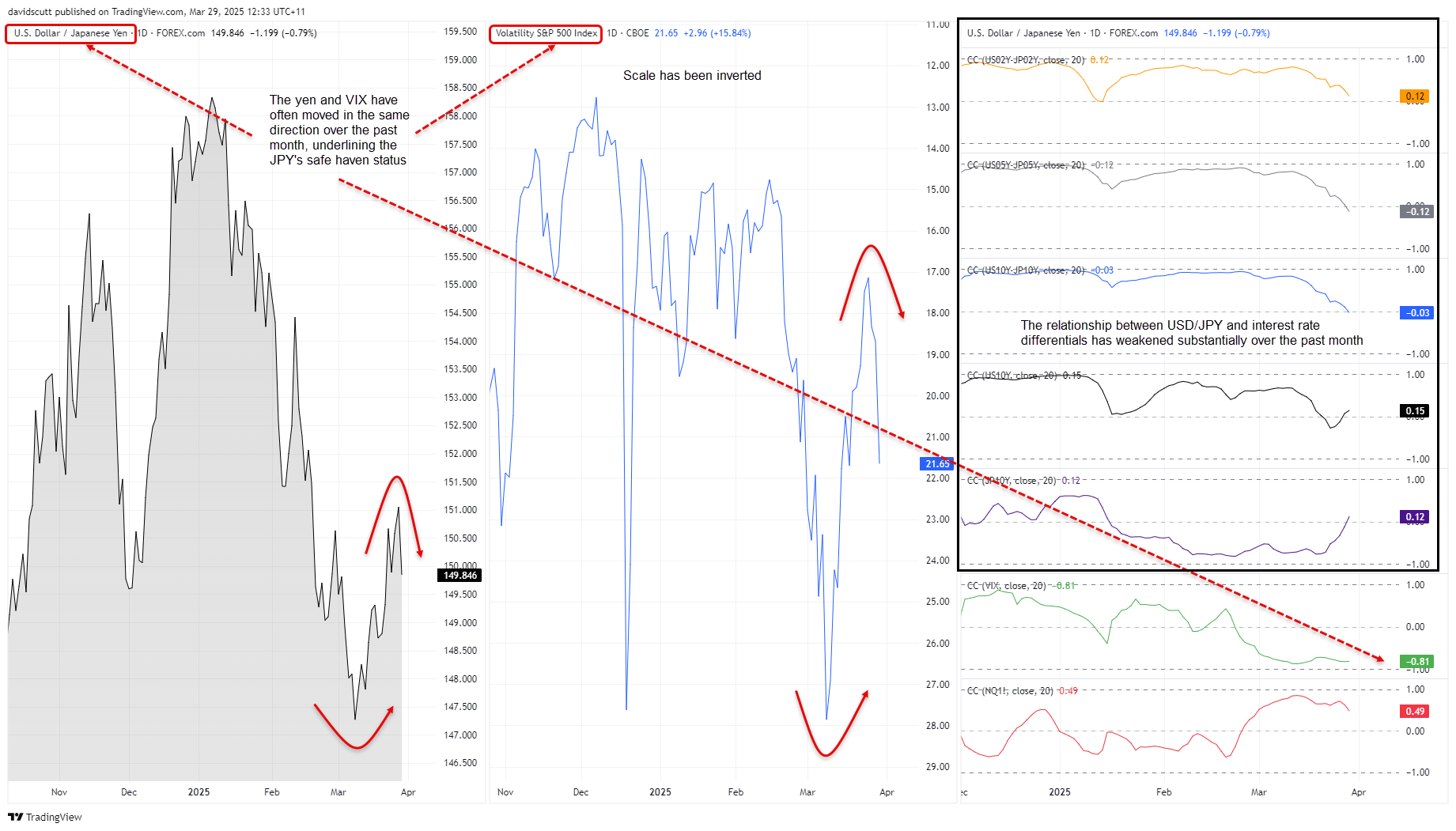
Source: TradingView
While the tight relationship between U.S.-Japan interest rate differentials has weakened over the past month, this likely reflects end-of-quarter capital flows rather than a permanent shift, especially with March 31 marking the end of Japan’s fiscal year. Once that passes, the correlation with yield spreads could strengthen again, placing focus not only on key economic data this week but also on the Trump administration’s April 2 ‘Liberation Day’ tariff announcement.
Assessing ‘Liberation Day’ Risk
As discussed in a separate USD/JPY note last week, Japan could be among the hardest-hit trade partners due to its large export volumes to the U.S. A 25% tariff on car imports is already locked in, threatening a market worth over $40 billion last year. What remains uncertain is the tariff rate on other Japanese imports, which could be significant given Japan applies a 10% sales tax on most domestic goods and services.
USD/JPY’s response will depend on more than just Japan’s economic exposure—it will hinge on the broader market reaction. Higher tariffs on Japanese goods would typically weaken the yen against the dollar, but if the tariff policy sparks broader risk aversion, the yen could rally as carry trades unwind. The market’s focus will be on the full scope of the tariff announcement rather than just the specifics for Japan.
Payrolls Headline Busy Data Calendar
Adding to the complexity, traders must also navigate major U.S. data releases, including non-farm payrolls on Friday. Weak household spending data last week reignited concerns over U.S. growth, making any fresh evidenced of economic weakness a potential amplifier for recession fears.
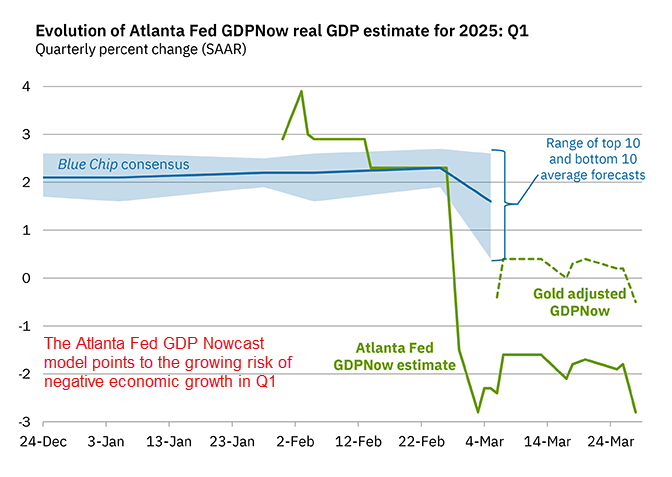
Source: Atlanta Fed
The unemployment rate remains the key figure to watch—if it sends a conflicting signal to payrolls, it will likely take precedence over the session. Other key releases this week include ISM manufacturing and services PMIs, JOLTs job openings, the ADP employment report, and factory orders, all of which could drive volatility, particularly if weak.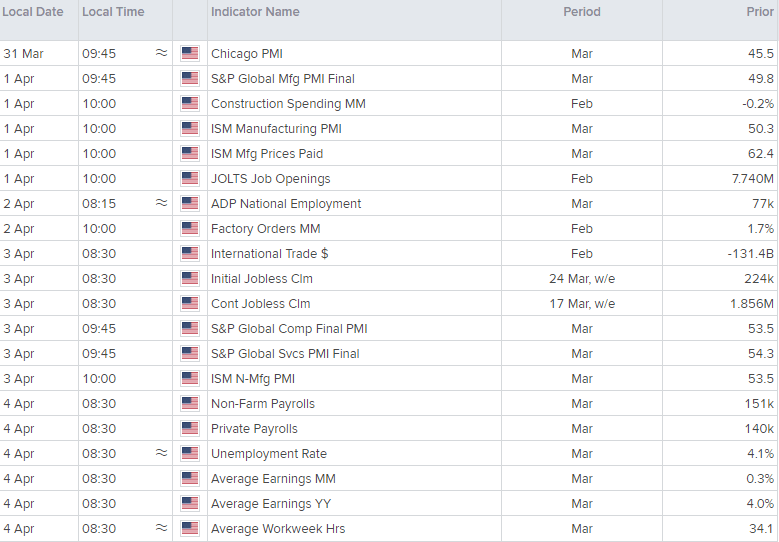
Source: Refinitiv (U.S. ET shown)
While Japan has a steady stream of data releases, they screen as a secondary consideration this week. The Tankan survey often generates headlines but rarely moves markets. If any domestic release warrants attention, it’s Friday’s household spending report given the BOJ’s need for strong consumption to boost underlying inflation.
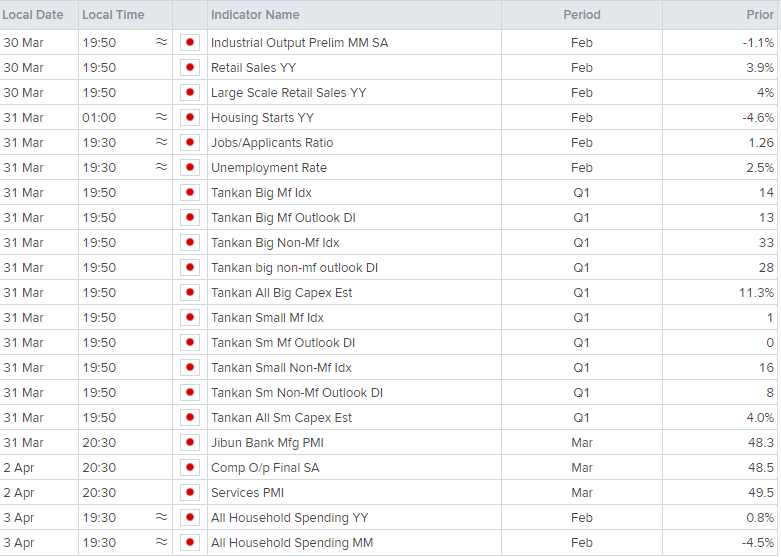
Source: Refinitiv (U.S. ET shown)
USD/JPY Forms Rising Wedge, Pullback Imminent?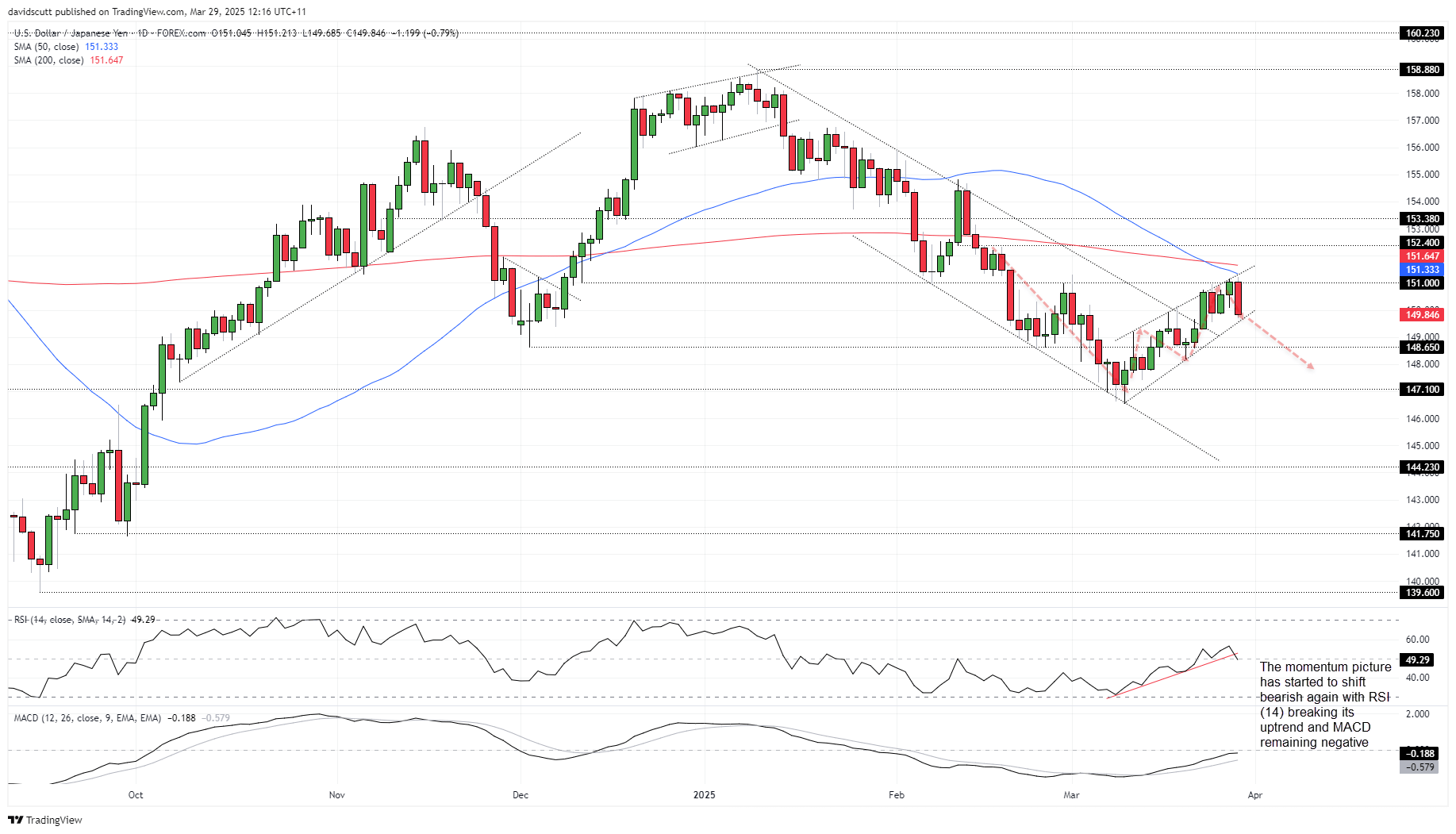
Source: TradingView
The bullish break of downtrend resistance highlighted in the last outlook played out nicely, lifting USD/JPY to multi-month highs. However, the sharp reversal from above 151.00 reinforces that the resistance zone running from 151.00 through the 200-day moving average may be tough to crack without a significant catalyst to drive it.
Zooming out, USD/JPY has been forming a rising wedge pattern for most of the past month, raising the risk of resuming the bearish trend that began earlier in the year. A wedge break would put 148.65 and 147.10 on the radar for shorts. RSI (14) has broken its uptrend, hinting that bullish momentum may be rolling over. Sitting in neutral territory, and with MACD still negative despite its recent uptrend, the broader momentum picture is far less convincing for bulls than it was this time last week.
